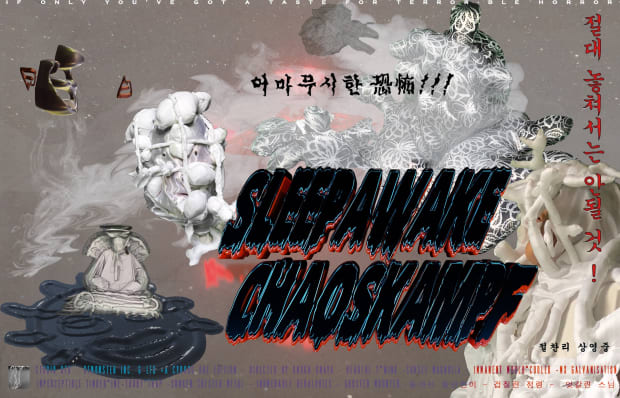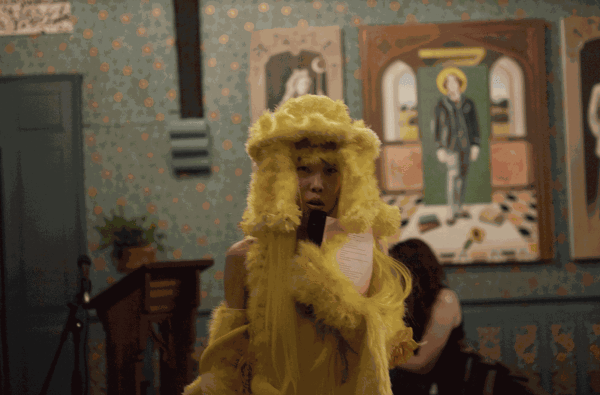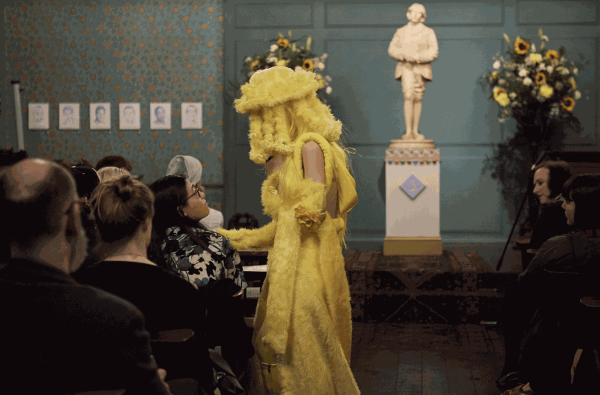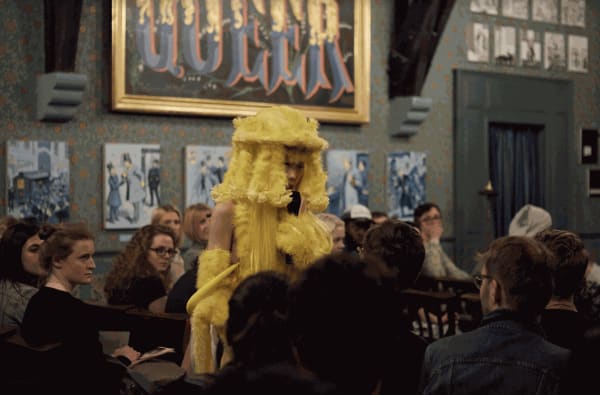-
NUKA NAYU & QUEERCIRCLE
IN CONVERSATION -
QUEERCIRCLE: I love the term ‘Chaos'! Could we start by exploring what that word means for you and how it’s implemented into your practice?
-

-
QUEERCIRCLE: In your artist’s statement, you open by declaring your work “invokes a state of ‘becoming’ rather than ‘being’; a constantly shifting threshold within the absent and invisible.” Is this the case on a personal level as well as artistic? And if so, is the process the same?
-

-
QUEERCIRCLE: You’re often confronting and challenging social boundaries and interactions through the various characters you create in your performances. Are there particular boundaries you are challenging and how does performance and the characters you are creating allow you to do so?
-

-
I use chaos and strangeness as ingredients for reaching the state of ‘becoming’.
NUKA NAYU
-

-
The Oscar Wilde Temple Artists’ Group Performance Night with Juliet Jacques at The Oscar Wilde Temple by McDermott & McGough, Studio Voltaire London, April 2019
-
QUEERCIRCLE: There is often a discrepancy between how we view ourselves and how others view us. Do our identities exist without the participation of others?
-

-

-

-
READ MORE FROM NUKA












